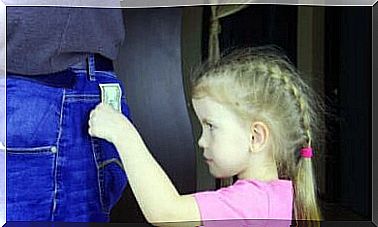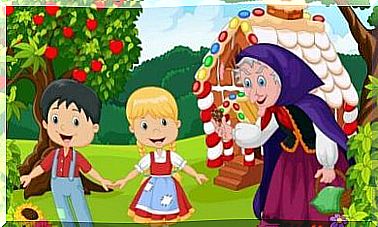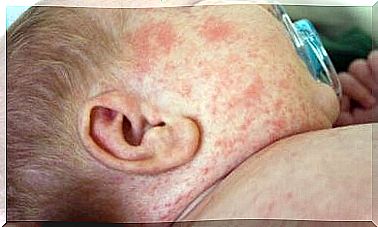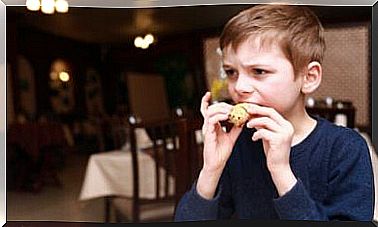Baby’s First Meals: Incorporating Solids Into Their Diet – You Are Mom
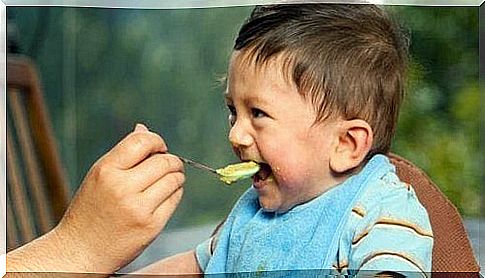
There is no reason to rush to incorporate solid foods into your child’s diet and, of course, it would be best to consult your pediatrician first so they can point out the right time to offer them. his first meals.
You will surely be confused when you receive this series of conflicting family advice. Therefore, in this article, we help you prepare for this dietary transition. What to start with? What foods should I absolutely not give him? Why does he refuse to eat? Find out here!
Baby’s first meals: when to incorporate solids?
Most babies are ready to incorporate solids by 5-6 months of age, although each child is managing their time. However, there are a number of indications that tell you the baby’s readiness to ingest these foods:
- Can he keep his head up? One of the signs is that the baby is in control of his head and can sit up on his own or with help.
- Is he interested in food? If the baby opens his mouth when given food or watches carefully how adults eat, it is probably time to incorporate some solids.
- Can he eat the food with a spoon and swallow it? If your child can close their mouth around the spoon while using their lips and tongue to swallow the food, then they are probably ready to taste their first porridge.
- Weight gain directly proportional to the increase in appetite. In general, children are ready to incorporate solids into their diet after they have doubled their birth weight. At the same time, you will notice that he has more and more appetite and that he is always hungry.
- Sit well when he has been helped. If the child is able to sit in their seat to eat while maintaining an upright position, this is an indication that this is the time when they can gradually begin to swallow food.
How to feed him?
Start with small amounts using small tablespoons and talking to the baby during the process, he probably won’t know what to do at first and may appear confused and play with food in his mouth or hand, rejecting him completely or wrinkle their noses in disapproval or mistrust.
Therefore, it shouldn’t frustrate you that its first solid foods end up in your baby’s hair, face, hands, or bib. Avoid feeding your child when he or she cries or rolls over, and remember to gradually increase the portions offered to the baby.
The start is not easy or quick, as the introduction of solids requires a great deal of patience. Therefore, consider that this special and long-awaited moment that you face with such energy can become exhausting because it is unusual for your little one. Don’t be frustrated!
In this sense, pediatricians calmly advise taking the first meals of babies and affirming that the first half-solids do not replace breast milk or add missing nutritional elements, they are a preparation of the baby.
In addition, experts add a tip: the mother should not be anxious or add “condiments” to arouse the child’s appetite. Many mothers fall into the gross error of adding honey, sugar, salt or oil to porridge.
Obviously, this not only avoids the unhealthy strategy for kids at such a young age, but it keeps them away from good eating habits. You should also stay away from commercial porridge with dyes and additives, because there is nothing better than what has been made at home. Be patient, the process takes time and dedication!
The time has come: what food do we start with?
As we have said, the idea of incorporating solids or semi-solids initially has a learning function rather than nutrition, so it is preferably complementary to the mother’s breast. However, keep in mind that this is the key time to start creating desired healthy habits and routines.
At this point you can start giving it:
- Vegetable Purees This tends to be the first solid food your child’s pediatrician will include in their diet. One by one, you should make porridge, carrot, and squash, in that order. Then you can make the famous tricolor puree, made from the mixture of all these vegetables.
- Fruit compote In parallel, they will allow you to incorporate solids like pear and apple, mainly in the form of compote, as they are less acidic, have a consistency that is easier to digest and have greater tolerance on the part of the baby. Then, in addition to increasing the amount offered to the baby, you can open up the variety-related range and provide bananas and oranges, which should preferably be ripe. All fruits can be offered as porridge, in a natural state, or as a cooked compote, as this is how they are present and provide vitamins, proteins, minerals and fiber.
- Cereals. The next step in giving your child their first meals is to incorporate cereals like polenta at the beginning, rice and small noodles later. And here you have to be careful because you have to check that they do not contain gluten, a protein found in wheat, oats, barley and rye that can be poorly tolerated by children, waking up celiac disease which manifests itself by very diverse symptoms.
Experts suggest incorporating the solids gradually, one at a time, waiting at least two days between one food and another in order to perceive possible allergic reactions to one of them. Diarrhea, vomiting, swelling, rash, and shortness of breath are warning signs.
Needless to say, it’s best to consult with the pediatrician on which foods to start with and when it’s wise to add new ones. Your doctor will likely advise against foods that are generally allergens such as soy, dairy, eggs, wheat, fish, peanuts, and chocolate.
Incorporate Solids: Additional Considerations for Your First Meals
Of course, it’s a great move for the child to get used to eating a wide variety of foods, but remember that the transition will take time as you have to get used to each new taste and texture.
Don’t get upset if he doesn’t seem to like certain tastes, give it to him later. Also, don’t leave any food out of the baby’s diet for the simple reason that you don’t like it. Don’t forget to give water and even try to include natural juices in his diet, he will love it!
Allergies and foods to avoid
Specialists suggest not including certain foods until the baby is a year old, especially if there is a history of allergies in the family. On the other hand, certain foods should be avoided for up to 3 years because they do not dissolve quickly in the mouth and the child could choke. Then avoid:
- Eggs
- Fish
- Dairy products
- Chocolate
- Caramel
- Strawberries and kiwis
- Soy
- Gluten (wheat, oats, barley, rye)
- Honey
- Peanuts
- Corn kernels
- Pop corn
- Hard candy
- Dried fruits

